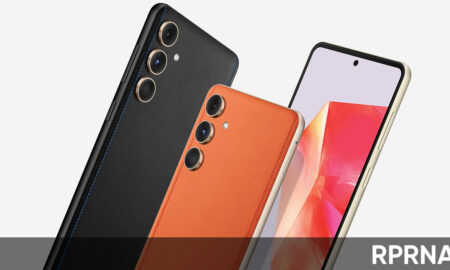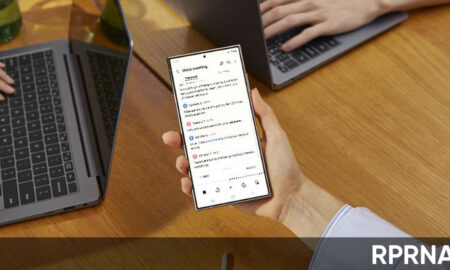Search results for "samsung ai"
-

 774Phones
774PhonesSamsung aims to make a splash in China with newly launched Galaxy C55
Key Points Samsung aims to make a splash in the Chinese smartphone market with the sophisticated features of Galaxy C55 5G. Galaxy...
-

 353News
353NewsSamsung aims to ship over 40 million units of TVs next year
According to the latest report, despite the poor industry prospects, Samsung has set itself a rather daunting goal: to ship more than...
-

 408News
408NewsSamsung aims to make all its home appliances Wi-Fi enabled
The IFA 2022 event is coming. Ahead of this, Samsung has unveiled its plans for its upcoming home appliances saying that the...
-

 284Technology
284TechnologySamsung aims to double the proportion of Exynos chips in Galaxy phones
Samsung mobile phones currently mainly use Qualcomm Snapdragon chips or its own Exynos chips. According to the latest report, Samsung hopes to...
-

 857News
857NewsSamsung Galaxy M35 5G launched in India: Check specs, price and availability
Samsung Galaxy M35 5G has been launched in India, boasting an impressive array of specifications and features. Let’s dive in and check...
-

 372News
372NewsSamsung’s Galaxy AI features to be available on 200 million devices by the end of 2024
The previous target of 100 million has now extended to 200 million Galaxy devices. Samsung informed at the Galaxy Unpacked event in...
-

 418News
418NewsSamsung Galaxy Buds 3 Series is here with new design, Galaxy AI features, and more
Key Points Galaxy Buds 3 and Buds 3 Pro will revolutionize the audio experience. Users can pre-order Galaxy Buds 3 and Buds...
-

 368News
368NewsSamsung Galaxy Z Fold 6 and Z Flip 6 launched – Check specs and availability
Samsung officially unveiled the latest Galaxy Z Fold 6 and Galaxy Z Flip 6, a book and clamshell style foldable phones. These...
-

 436Wearables
436WearablesHere’s your early look at Samsung Galaxy Ring Sizing kit (Retail box)
Today, at the mega Unpacked event in Paris, Samsung will unveil its most awaited Galaxy devices. But hours before the launch conference,...
-

 421Updates
421UpdatesOne UI 6.1.1 AI Smart Reply feature might reach more Samsung devices
Key Points Samsung’s One UI 6.1.1 will bring the AI Smart Reply feature. This element might expand to Galaxy S24 and more...
